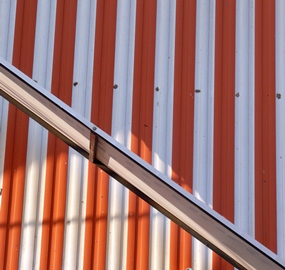Acquiring what I call the “photographic eye” is something that can be learned. Certainly there are those who have the artistic streak in-built, but developing the necessary vision will increase your ability with a camera, and is not dependent upon hi-tech toys.
Begin with a different viewpoint. To make the photograph really interesting, you will end up recording something which was always there, but until you have captured that image, nobody realized it was there.
Start with that different viewpoint, which I call “Looking Up, Looking Down.”

There is a great tendency for us all to take very ‘standard’ shots. By ‘standard’, I mean from a very standard viewpoint, so we end up with standard pictures. For example, when was the last time you took a photo that was not taken while you were standing and looking through the viewfinder? A long time, I am sure.
However, when you take a photo from the standard position, you do get something that is instantly recognizable, because the subject of the photo is presented as we normally see that subject. We look up to see street lights, we look down to see children. All sounds boringly obvious. But it is that ‘normal’ viewpoint that can also make your photographs boring.
I have mentioned before that when taking photographs of children, you should get down to be at the same level as they are. This way you will get a much more pleasing photograph of your little bundles of joy. However, when you are down on your knees you have also produced the situation whereby you can get some other different shots. These are a baby’s eye viewpoint of the world.
Looking up at everyone and everything. It is well worth trying to take some shots of adults, or even the environment of the house. You will be amazed at just what your infants see! You may also be horrified when you see the dust under the computer table!
While still in the ‘looking up’ mode, when you look higher than the ground floor shops, you may find there are some sights well worth blazing off a couple of frames. Even just washing hanging out can be quite noteworthy. Just try it. Remember too, that you get a distorted shot when you tilt the camera towards the sky. Buildings appear to lean over backwards, the trunks of trees look much more substantial than they really are. It is a kind of exaggerated perspective effect.
Now ‘looking down’ can probably be even more rewarding, as this is a viewpoint that you never usually try (other than on children and lift wells). It also will present you with a kind of ‘helicopter’ view, that from that aspect alone, makes it very different. Look at the shot used this week. This was taken from the third floor of a shop-house of the awning, the different viewpoint making you wonder just what it is.
So what lens should you take? This is one of the rare times when I recommend a zoom lens. From the lofty viewpoint, it is difficult to predict what focal length you will need, and rather than taking several lenses up to the platform with you, the zoom can do it all.
There is also the fact that if you go very high up (or even out of the helicopter), a Skylite 1A filter does help get rid of any altitude ‘haze’, but I would expect that most photographers already have the 1A permanently screwed on the front of the lens, just as scratch insurance.
It is important, that as you develop your artistic eye, you experiment with different viewpoints. Not all of them will be successful, but some will be, and the new viewpoint can be the catalyst for some unique art. And surely that is what many of us are trying to achieve.
I personally believe that by applying some different viewpoints to some traditional Thai subjects you would produce some excellent wall art, that could even have commercial possibilities. A trip around the local Wat, looking up and looking down, would be an interesting project for all photographers, from school age to old age. There will be one within 500 meters of your home!




